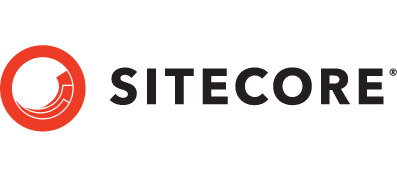Dashboarding can be a vital tool for driving a business, providing an automated overview on how things are travelling. However, it’s easy for it to turn into a data dump that ends up being ignored. Below we map out a few consideration points that can help ensure your dashboard keeps you focused and on track:
1. Regular tune ups deliver more accurate data
You’d think this goes without saying, however as a starting point for most of our client engagements we begin with an interrogation of existing data. This nearly always uncovers incorrectly captured or processed data. Here’s an eye-opening example – a data audit we performed for a client in 2020 identified a 4 million dollar saving in unprofitable activity that had been incorrectly reported as their most effective.
Errors generally don’t occur due to inexperience, but because things change. Websites, advertising platforms, naming conventions, even staff, can all change and unwittingly impact your data. Therefore when you create a new dashboard it’s an excellent time to do a bit of a data check-up and make sure it’s accurate. It also never hurts to have regular data hygiene evaluations too.
2. What type of vehicle do you need?
Understanding the purpose of the dashboard is important. Dashboards may lighten data analysis and reporting, however it’s not meant to replace them. Neither is it meant to replace or reinvent capabilities of purpose-built tools you may have in your business, such as your business or web analytics. Having a clear objective for the dashboard will help you prioritise displaying only the essentials. Is it for guiding marketing? Informing content? Or tracking progress compared to your competition.
3. Different features for different audiences
Just like the dashboard in a vehicle, a data dashboard should provide you with key information needed at a glance. If your dashboard’s core purpose is to help steer your marketing, it’s important to remember that you may need to cater to multiple audiences, each with different requirements. For example:
- top line business performance indicators for your C-suite;
- granular drill downs of initiatives for your marketing lead;
- a creative a/b testing interface for your in-house creative.
Merging everything together on one dashboard just makes information harder to absorb and creates friction for users who have to hunt for the data specific to their needs. Rather than cramming everything into one interface, it may be perfectly reasonable to have multiple dashboards for different audiences. As a loose guide, it’s worth trying to keep your primary indicators to 3-5 metrics, and total dashboard to under 20 metrics. Too much data, and you risk losing focus on what’s most significant.
4. Indicators to destinations
It can still be easy to get carried away when visualising data, even if you’ve defined your audience and dashboard purpose well. However like the oil light on a car dashboard, the data in your dashboard should only act as an indicator. It’s a prompt that there’s been a change, and deeper analysis may be necessary.
As such, it’s worth giving detailed consideration to the levels and parameters that would signify action is needed. If your indicator triggers too early or too frequently, then it may become easy to ignore them, resulting in your dashboard becoming an ineffective business tool. Setting comparison timeframes, benchmarks and thresholds that take into consideration typical fluctuations will be vital to enabling your business to easily identify outlier performance.
5. Pre-plan your navigation
With all the above defined, it’s time to start thinking about the journeys the drivers of your dashboard may need to take. After an indicator metric highlights a change or signal of notice, what’s the next destination to be reviewed? This will likely depend on the purpose of the dashboard and the primary audience, and it may be worth running through a few use cases or scenarios to best determine your dashboard structure. Here’s an example scenario for a Marketing Dashboard:
- Dashboard shows website revenue is down for the week.
- Check what factors are contributing to this: a review of conversion rate, average order value and transaction volumes reveals that transaction numbers are down.
- As conversion rate and average order value is normal, look for a drop in traffic volume: a check on overall website visit volumes indicates they are also down.
- Next you’ll want to attempt to isolate the main source of this traffic decrease: a review of channel traffic volumes reveals paid social volumes are down.
- Look to see whether a change in approach has impacted performance: check channel tactic breakdown; consult marketing platforms or media agency if additional information or action is required.
Here’s an example of what mapping this structure out would look like:

However that same revenue indicator may also be important to other audiences in other areas of the business. And because of their different remits, pathway for further analysis may differ significantly.
An operational dashboard for an ecommerce manager who wants to know what products to feature on the homepage may find more use cases for a dashboard which allows them to explore what product and categories are currently trending. So their structure would look something like:

We’d love to end this article with a stat about how much more effective businesses are with dashboards, however an (accurate) statistic like this is unlikely to exist. The mere fact a business has data visualiation and automation of data, doesn’t guarantee it yields higher effectiveness. Many of these tools may have data hygiene issues or have been designed without the right experience in mind.
Like any piece of machinery, consistent and regular maintenance leads to better outcomes, and helps avoid bigger, long-term problems. It’s important to stay on top of your dashboards to keep them in peak condition, and AFFINITY works with a number of our clients on doing just that. If you’d like to discuss how we could help you, drop me a line at rob.m@affinity.ad


















